F 313 Leaf ID
1/69
Earn XP
Description and Tags
Based on the leaf characteristics of each plant. Check out inflorescence/fruit flashcards! https://knowt.com/flashcards/5f968975-7478-4b87-bbd6-015f791126ce
Name | Mastery | Learn | Test | Matching | Spaced |
|---|
No study sessions yet.
70 Terms
Pinaceae Pinus virginiana (Virginia pine)
2 twisted divergent needles per fascicle that are 1.5 - 3 inches in length.
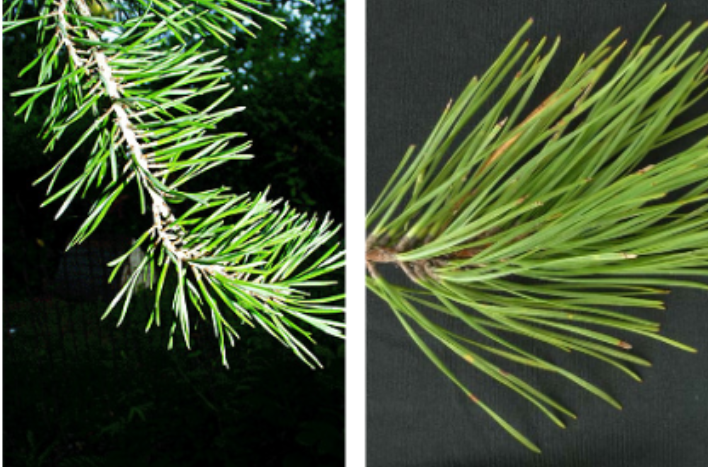
Fagaceae Quercus alba (white oak)
Alternate, simple, 7-10 rounded lobes.

Fagaceae Quercus montana (chestnut oak)
Alternate, simple, crenate margin.
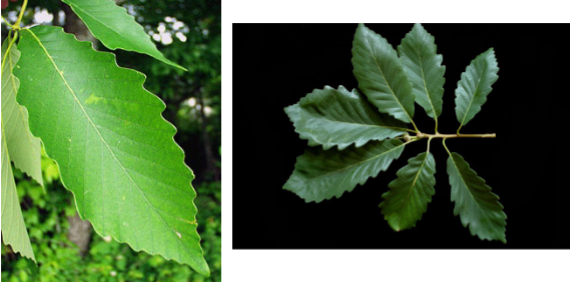
Fagaceae Quercus falcata (southern red oak)
Alternate, simple, 3-7 lobed leaves with deep sinuses and bristle tips.
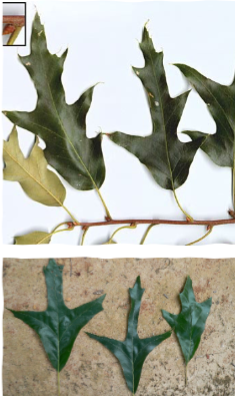
Juglandaceae Carya ovata (shagbark hickory)
Alternate, pinnately compound leaf, with 5-7 serrate/ciliate lanceolate leaflets.
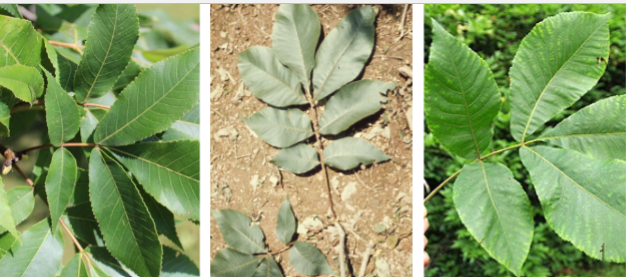
Juglandaceae Juglans nigra (black walnut)
Alternate, pinnately compound leaf, with 10-24 finely serrate ovate-lanceolate leaflets and poorly formed terminal leaflet.
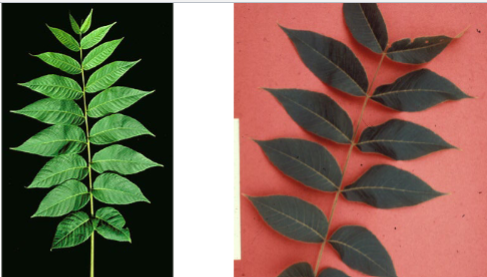
Sapindaceae Aesculus glabra (Ohio buckeye)
Opposite, palmately compound leaf, with 5-7 serrate obovate leaflets.
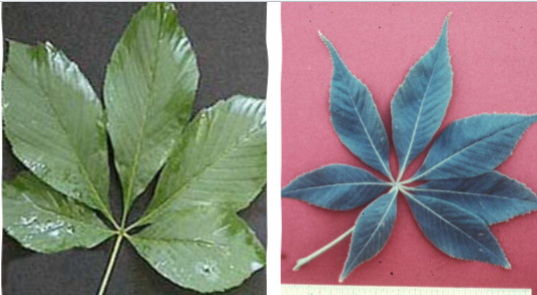
Rosaceae Prunus serotina (black cherry)
Alternate, simple leaf, ovate with finely serrate margins and glands on petiole.

Ulmaceae Ulmus americana (American elm)
Alternate, simple leaf, sharply doubly serrate margins with inequilateral base.
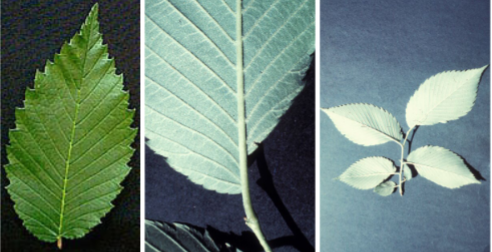
Tiliaceae Tilia americana (American basswood)
Alternate, simple leaf, cordate with serrate margins and an unequally cordate base (lop-sided leaf).
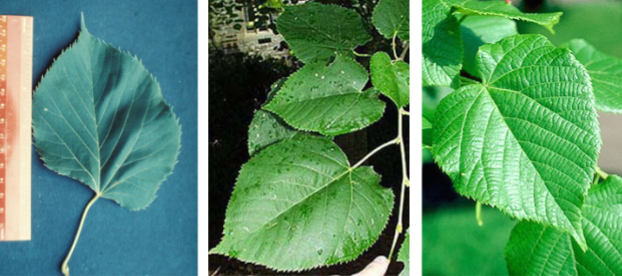
Bignoniaceae Catalpa speciosa (northern catalpa)
Whorled/opposite, simple, cordate with entire margins.
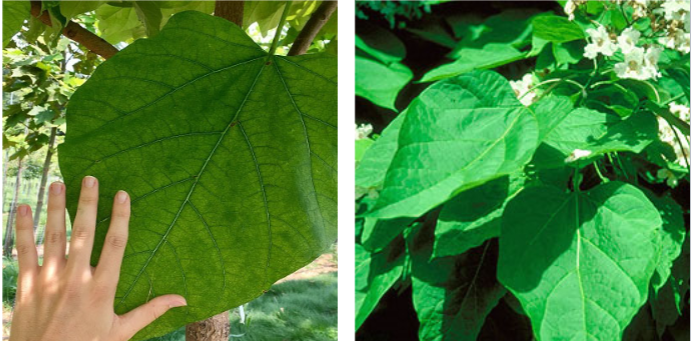
Cornaceae Nyssa sylvatica (black tupelo)
Alternate, simple, oblong/ovate with entire margins.
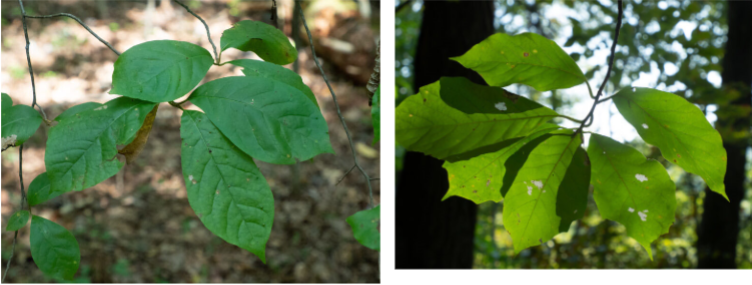
Magnoliaceae Magnolia grandiflora (southern magnolia)
Alternate, simple, evergreen leaf with entire margins and a rusty fuzz below.
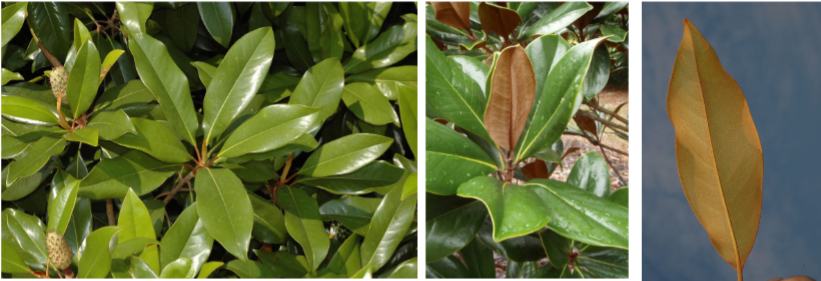
Magnoliaceae Liriodendron tulipifera (tulip tree)
Alternate, simple, 4-lobed leaf with entire margins and paired stipules.
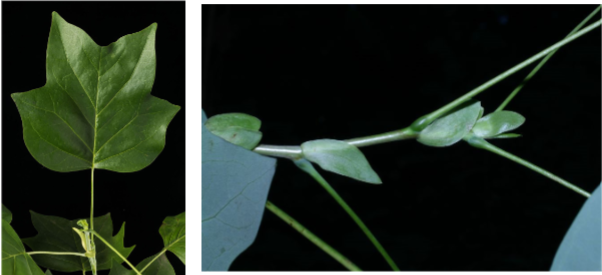
Fabaceae Robinia pseudoacacia (black locust)
Alternate, pinnately compound leaf with 7-19 oval leaflets and a pair of spiney stipules.

Fabaceae Gymnocladus dioicus (Kentucky coffeetree)
Alternate, bipinnately compound with ovate leaflets (overall very large).
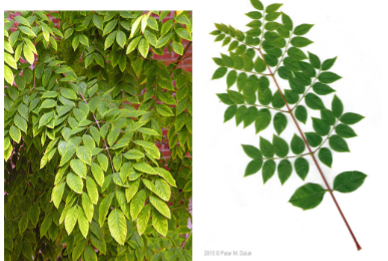
Poaceae Aristida stricta (wiregrass)
Long, inward rolling narrow leaves, with hairy sheaths and tiny inconspicuous ligules.
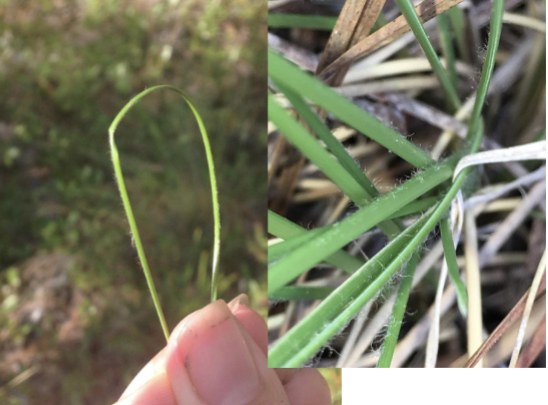
Poaceae Deschampsia flexuosa (wavy hair-grass)
Cool-season bunch grass, with 1-2 foot leaf and long membranous ligule
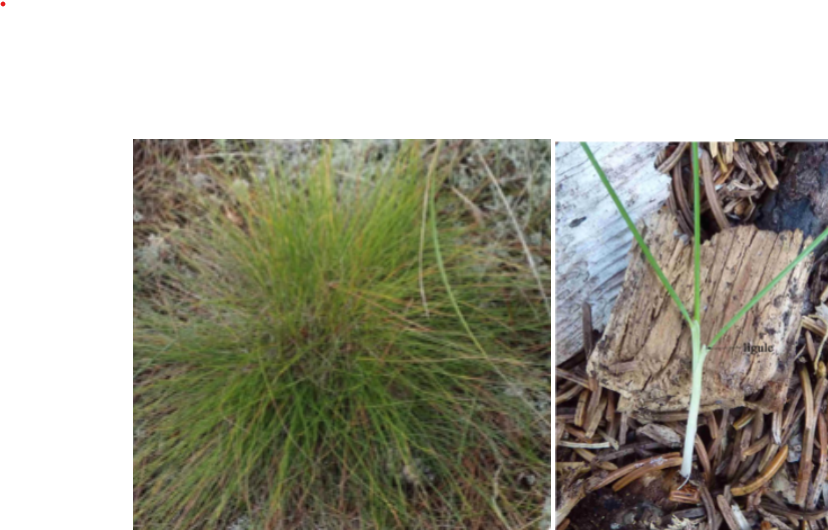
Ericaceae Rhododendron maximum (great laurel)
Alternate, simple, evergreen, leathery leaves with entire margin that roll in cold weather.
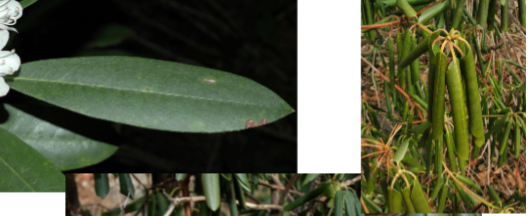
Dryopteridaceae Dryopteris marginalis (marginal wood fern)
Bipinnately compound leaf with kidney-shaped, translucent indusium (to protect sori)
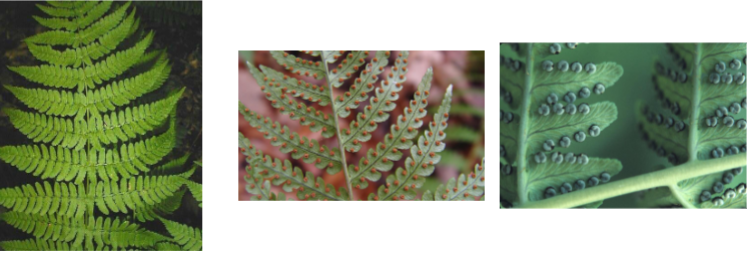
Cupressaceae Juniperus virginiana (eastern redcedar)
Evergreen small leaves with two forms, either scale-like with four sides held tightly or longer, blue-green needle-like leaves common on young trees.
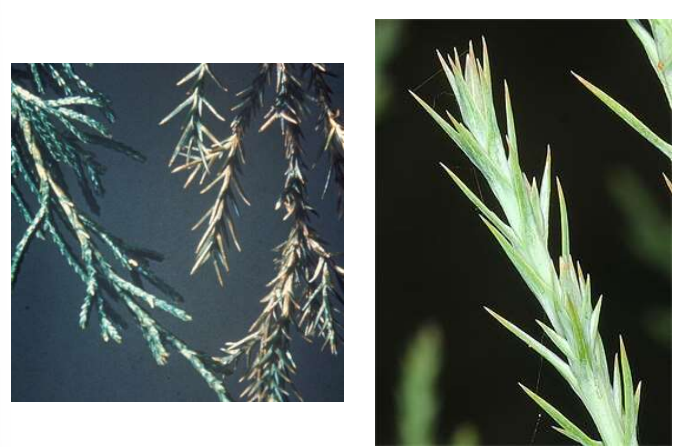
Fagaceae Quercus macrocarpa (bur oak)
Alternate, simple, obovate leaf with lobes and characteristic deep sinus that ‘splits’ the leaf.
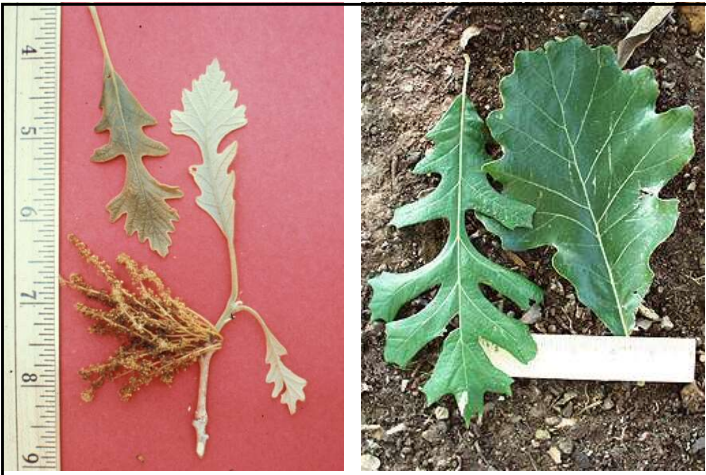
Sapindaceae Acer negundo (boxelder)
Opposite, pinnately compound leaf with 3-5 leaflets and coarsely serrate margin that is like a maple leaf.
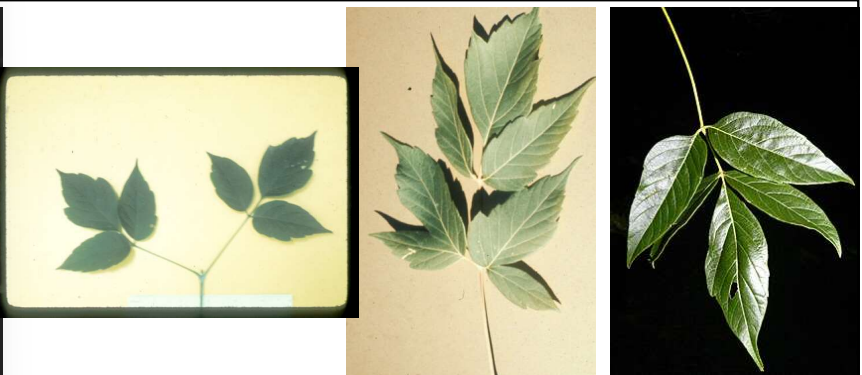
Sapindaceae Acer saccharinum (silver maple)
Opposite, simple leaf with 5 deeply palmate sinuses that are coarsely serrate and have a white below.
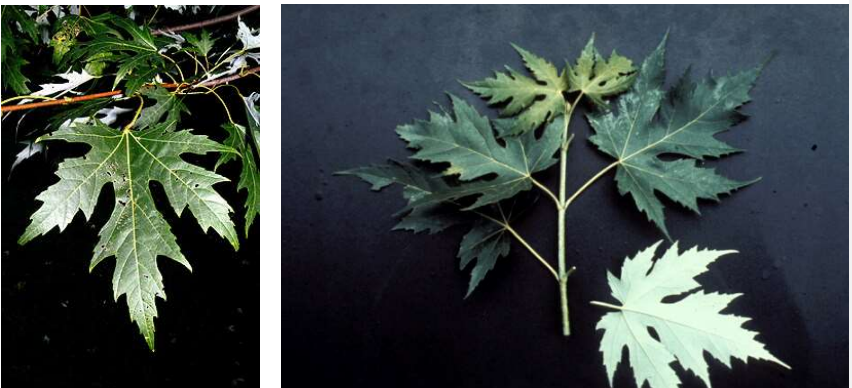
Oleaceae Fraxinus pennsylvanica (green ash)
Opposite, pinnately compound leaf with 7-9 lanceolate serrate leaflets.
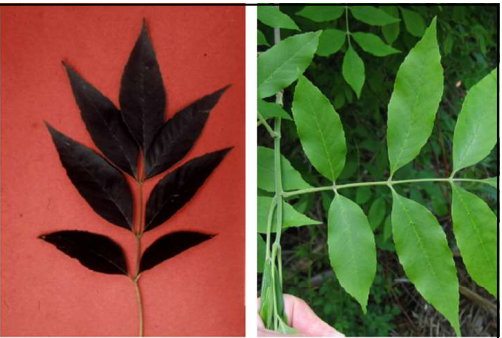
Poaceae Andropogon gerardii (big bluestem)
Rhizomatous grass with a ligule with a fringed top, leaves with long hair on the bottom, that can reach 10 ft tall.

Poaceae Sorghastrum nutans (golden feather grass)
Loose bunchgrass with a white, membranous ligule, characteristic thick ‘rabbit ear’ auricle, and prominent node.
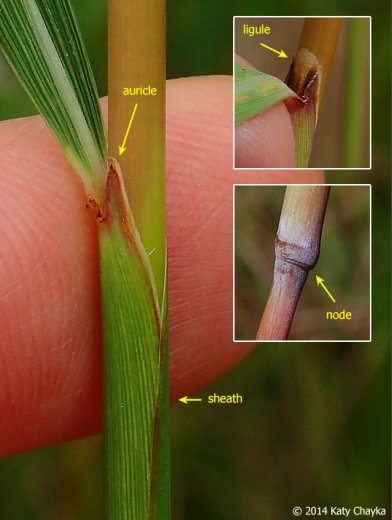
Poaceae Panicum virgatum (switchgrass)
Rhizomatous grass with super hairy sheath at collar and a ciliate ligule.
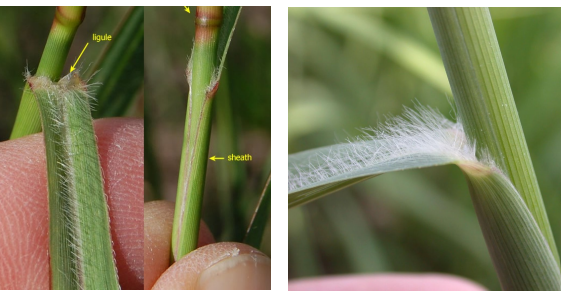
Poaceae Schizachyrium scoparium (little bluestem)
Bunchgrass with a long ligule with ciliate hair, purplish nodes, and scabrous (rough) leaves, which can reach 1.5-5 ft tall.
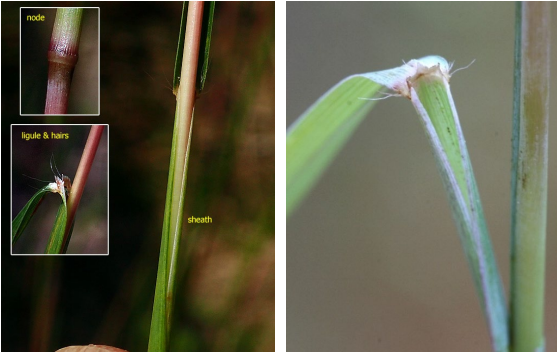
Asteraceae Solidago missouriensis (Prairie goldenrod)
Rhizomatous forb with alternate leaves with entire/lightly serrated margins, with 3-5 viens, that reaches 1-3 ft tall.
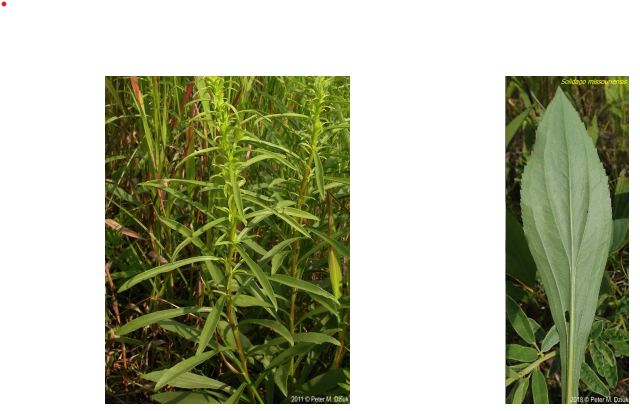
Asteraceae Artemisia frigida (prairie sagewort)
Subshrub forb with alternate, highly dissected (deeply divided sinuses) leaves.
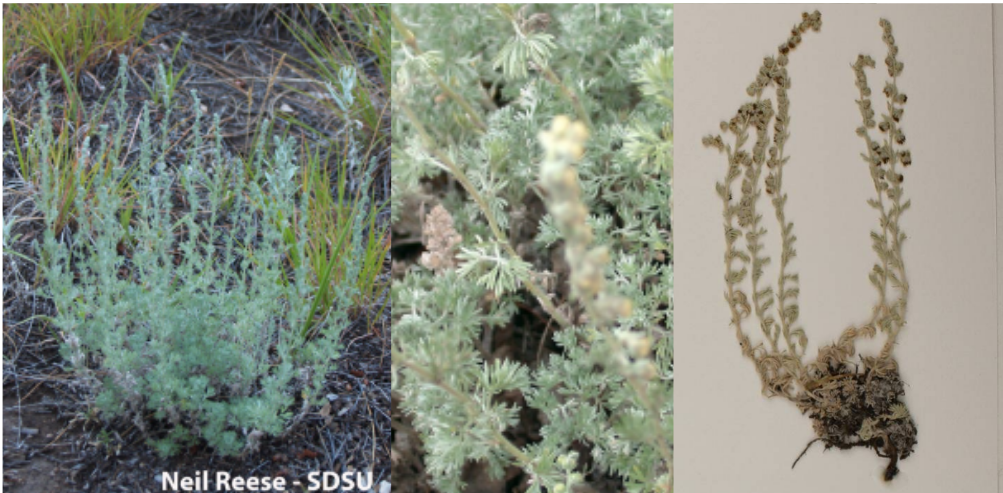
Malvaceae Sphaeralcea coccinea (scarlet globemallow)
Short, rhizomatous forb with leaves that are irregular palmate lobes with deep sinuses and hair.
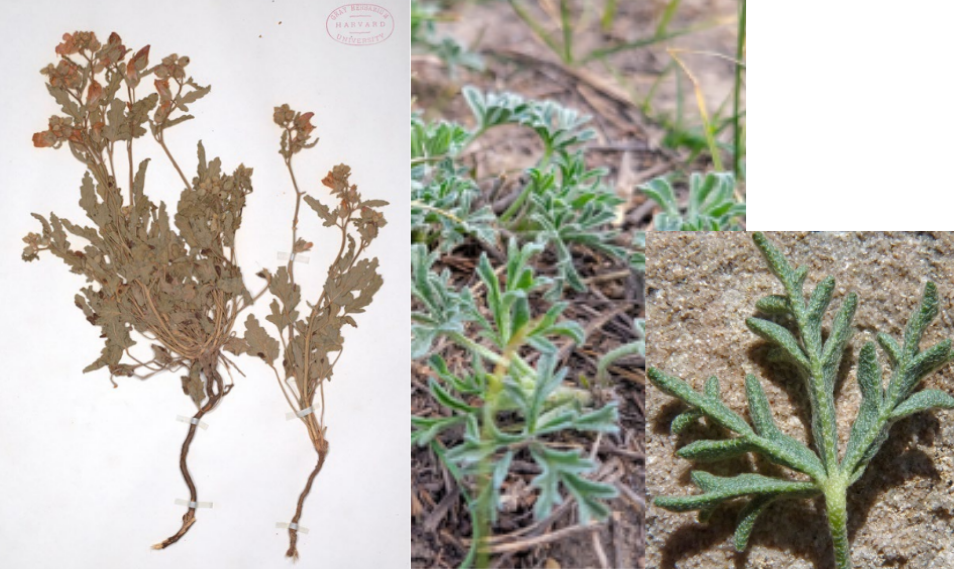
Poaceae Hesperostipa comata (needle-and-thread grass)
Bunch grass with narrow blades, prominent venation and a long membranous ligule
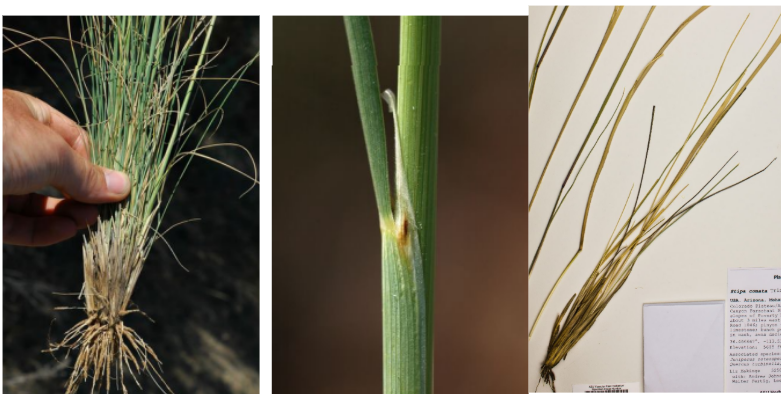
Poaceae Pascopyrum smithii (western wheatgrass)
A cool season, rhizomatous with clasping auricles and strongly veined upper leaf.
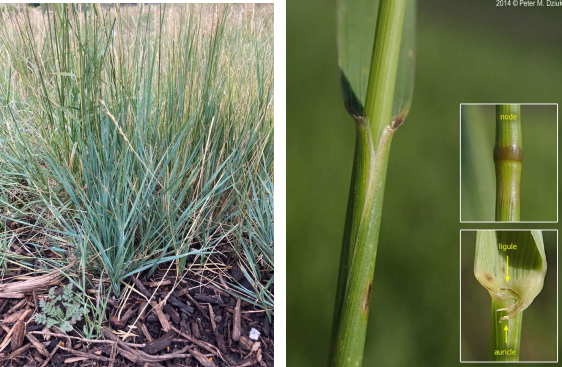
Poaceae Bouteloua gracilis (blue grama)
Small bunchgrass with long hairs at the collar, ciliate ligule, with drying tips
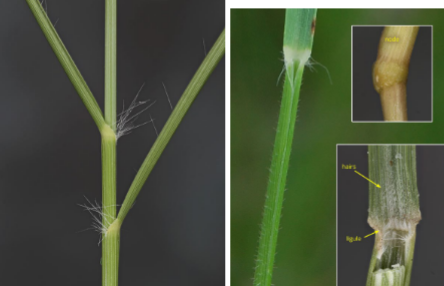
Poaceae Nassella viridula (green needlegrass)
A cool season bunchgrass with Hairy ligule with long, narrow, rolling leaves
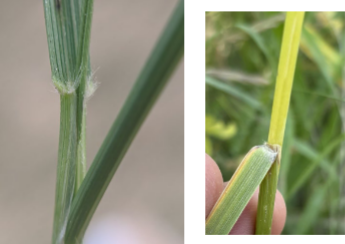
Poaceae Koeleria macrantha (junegrass)
A cool-season grass with a short ligule and a hairy sheath.
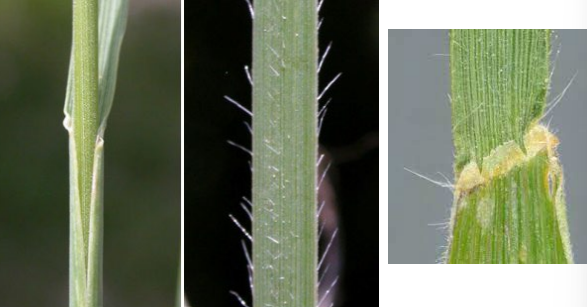
Cupressaceae Juniperus ashei (Ashe juniper)
Opppostie, scale and awl-shaped leaf with minutely toothed margins.
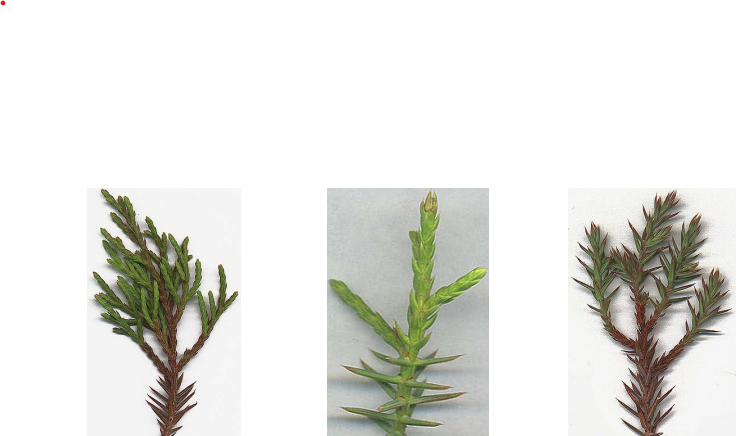
Fabaceae Prosopis glandulosa (honey mesquite)
Alternate, bipinnately compoound leaf with 8-20 leaflets with two spines at the leaf base.
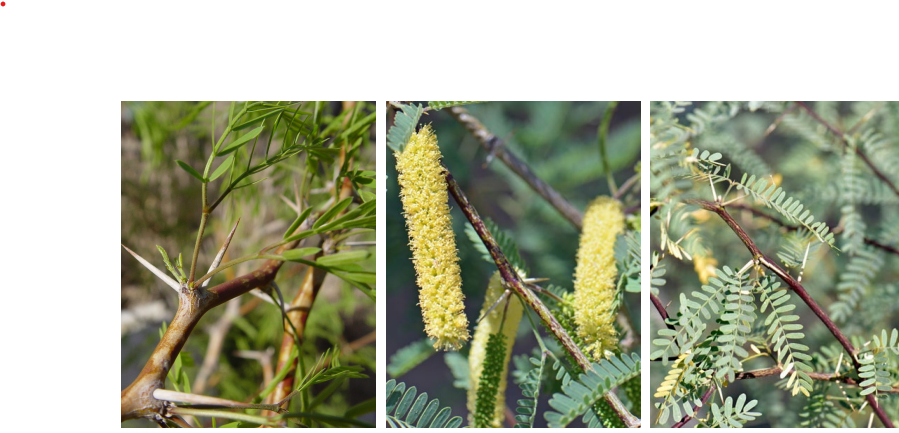
Salicaceae Populus deltoides (eastern cottonwood)
Alternate, simple triangular leaves with a flattened petiole and glands at the top of the petiole.
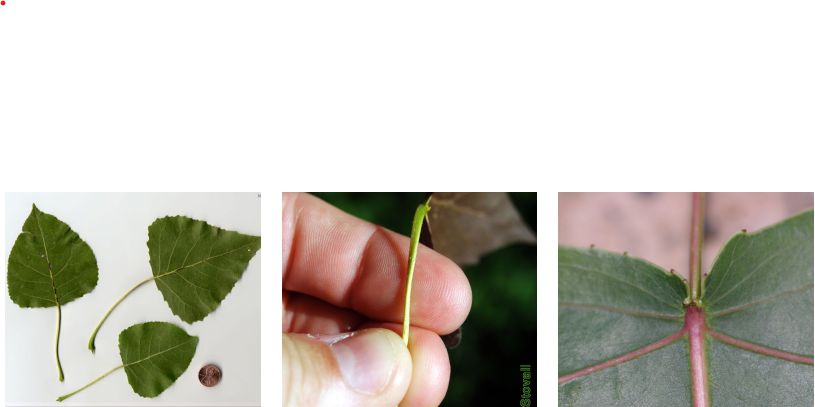
Betulaceae Betula alleghaniensis (yellow birch)
Alternate, simple, ovate leave that are prominently pinnately veined and have doubly serrate margins.

Fagaceae Fagus grandiflora (American beech)
Alternate, simple, oblong-ovate leaves that are pinnately veined and end in a sharp tooth.
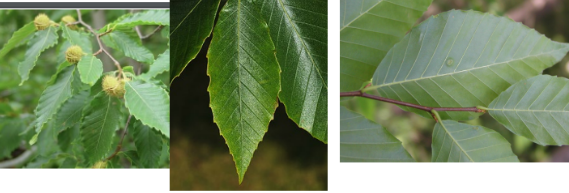
Fagaceae Quercus rubra (northern red oak)
Alternate, simple leaves with bristle-tipped lobes that extend 1/3 of the way to the midvein.

Oleaceae Fraxinus americana (white ash)
Opposite, pinnately compound leaves with seven serrate/entire leaflets ON STALKS.
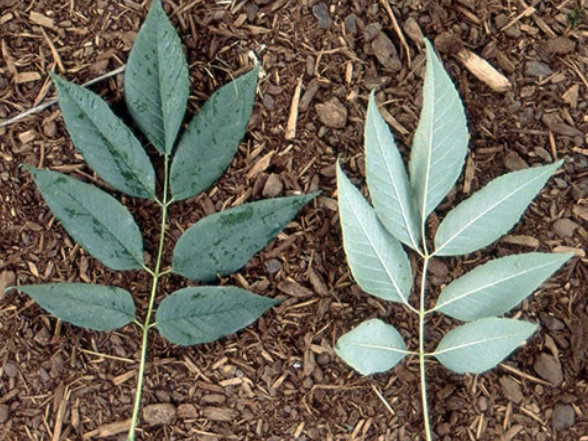
Sapindaceae Acer saccharum (sugar maple)
Opposite, simple leaves with palmate veins with “rounded” lobes
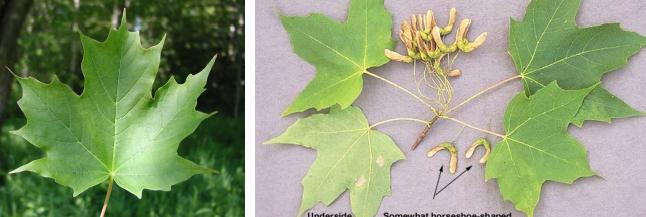
Sapindaceae Acer rubrum (red maple)
Opposite, simple leaves with palmate veins and 3-5 lobes that have serrate margins and shallow sinuses.
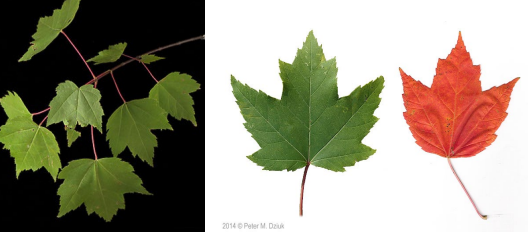
Cupresssaceae Thuja occidentalis (northern white cedar)
Evergreen, scale-like leaves with very flat branchlets
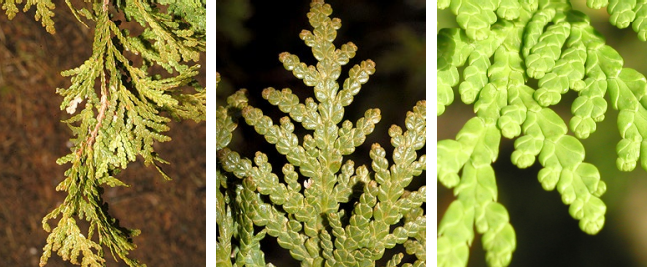
Pinaceae Abies balsamea (balsam fir)
Evergreen singular flattened needles with a suction-cup attachment and silvery stripes below.
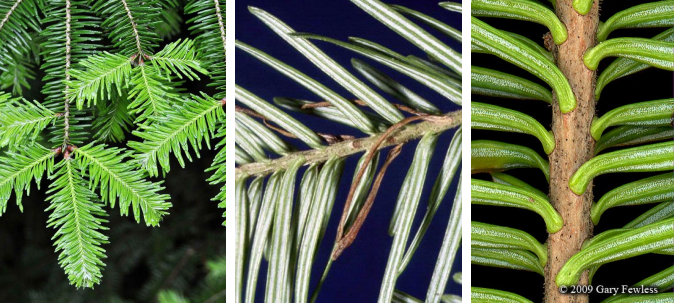
Pinaceae Pinus banksiana (jack pine)
Evergreen needles with two needles per fascicle that are divergent. Has a dependent yellow bird called a Kirtland’s Warbler.
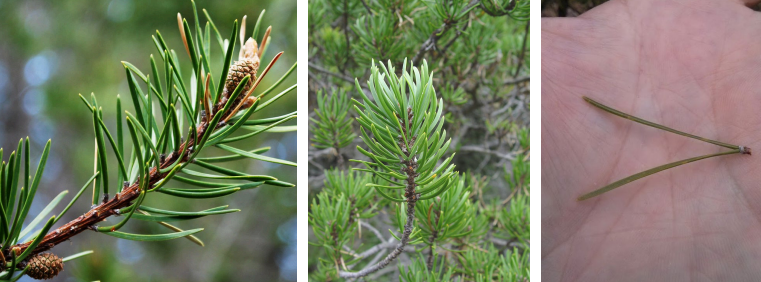
Pinaceae Pinus resinosa (red pine)
Evergreen needles with two long needles per fascicle that snap cleanly.
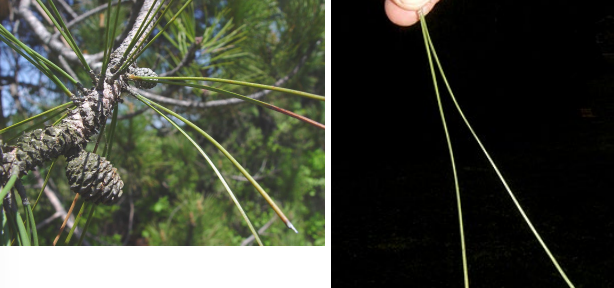
Pinaceae Pinus strobus (eastern white pine)
Evergreen needles with five thin needles per fascicle that have 3 or more white lines below (stomata).
Pinaceae Tsuga canadensis (eastern hemlock)
Evergreen singular flattened needles with a relatively flat attachment (leaves have small petioles) and two silvery stripes below.

Ericaceae Arctostaphylos uva-ursi (kinnikinnick)
Rubiaceae Mitchella repens (partridgeberry)
Cyperaceae Carex plantaginea (plantain leaf sedge)
Cyperaceae Carex intumescens (greater bladder sedge)
Dryopteris carthusiana (spinulose wood fern)
Liliaceae Clintonia borealis (bluebead lily)
Liliaceae Maianthemum canadense (Canada mayflower)
Liliaceae Trillium grandiflorum (white trillium)
Primulaceae Trientalis borealis (starflower)
Pinaceae Pinus longaeva (Great Basin bristlecone pine)
Pineaceae Pinus monophylla (singleleaf pinyon pine)
Cupressaceae Juniperus osteosperma (Utah juniper)
Asparagaceae Yucca brevifolia (Joshua tree)
Dense terminal rosettes with evergreen, stiff lanceolate leafs.
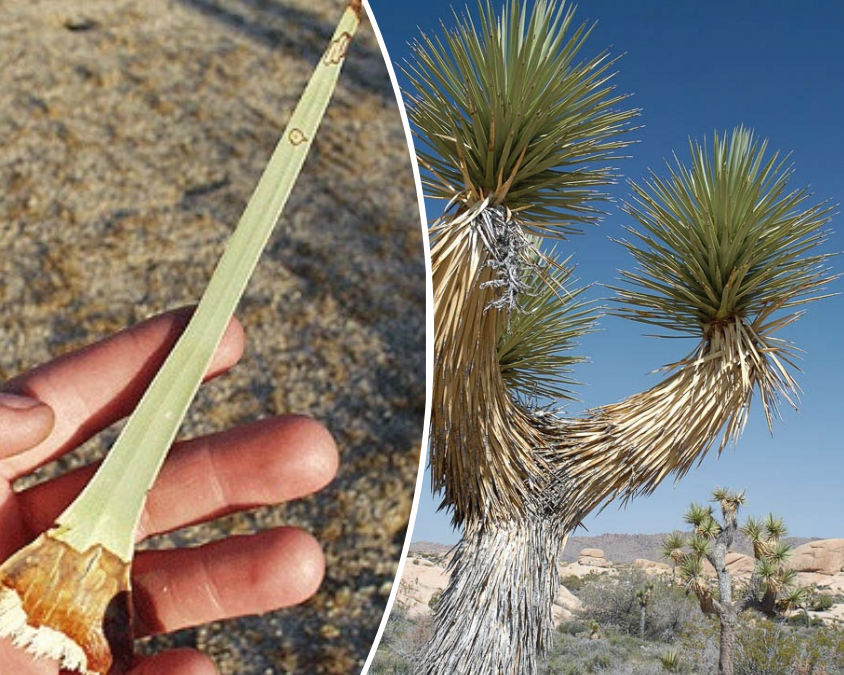
Asteraceae Artemisia tridentata (big sagebrush)

Asteraceae Ericameria nauseosa (rabbitbrush)
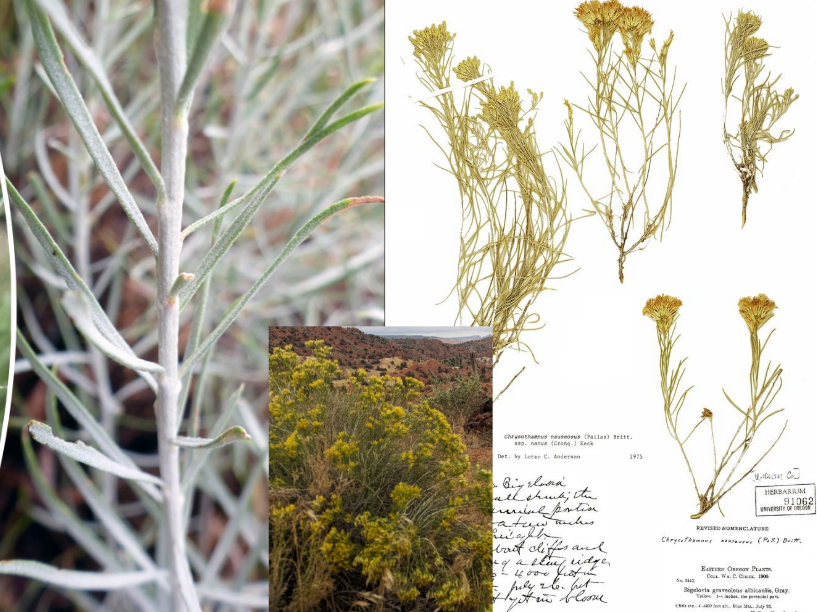
Poaceae Elymus elymoides (squirrel tail)
Poaceae Bromus tectorum (cheatgrass)
Poaceae Poa secunda (Sandberg’s bluegrass)